17 Awesome Things To Do In Pinnacles National Park (For Families)
Pinnacles National Park is the newest and smallest national park in California. Located in Central California just east of the town of Soledad, Pinnacles is often overlooked when considering places to visit in California. However, as you will see from our list of things to do in Pinnacles National Park, it is definitely worth taking the time to visit.
We live just about an hour away from Pinnacles National Park and I have personally spent over two months camping here altogether. Six weeks of which were during an archeology field school while I was in college. That summer I hiked every mile of trail Pinnacles has to offer. In spite of literally having seen it all, I still go back regularly to visit.
Pinnacles is a small park packed full of great hiking through varied and unique terrain. I hope this list gets you inspired to visit Pinnacles National Park, you won’t regret it!
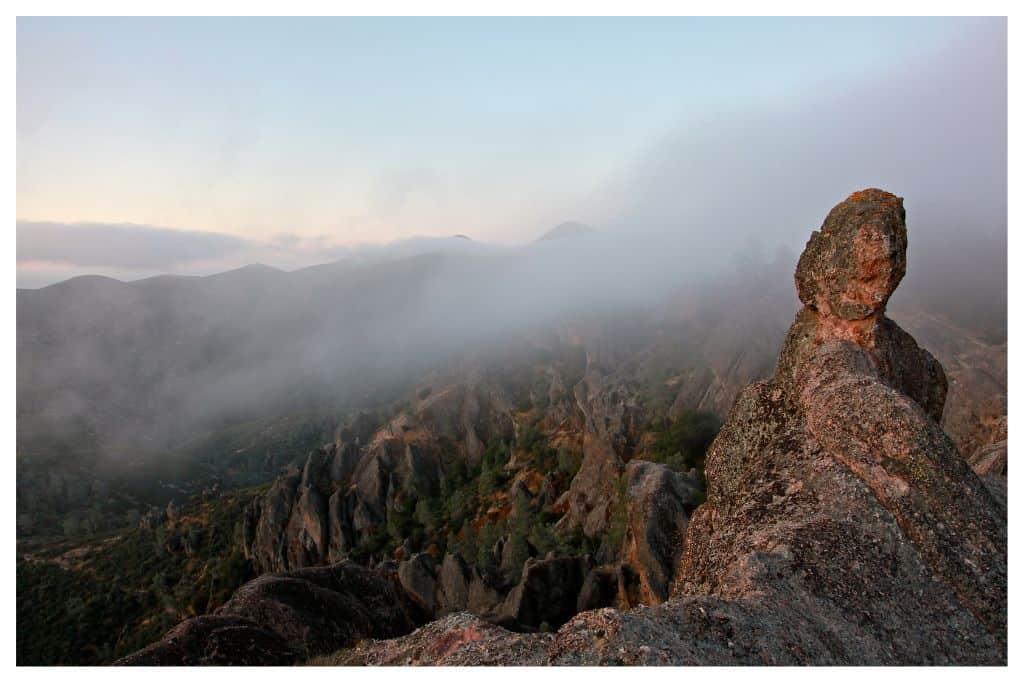
Is Pinnacles National Park worth visiting?
The Short answer is yes! While it doesn’t have the notoriety of larger parks like Yosemite or Sequoia National Park, Pinnacles has a ton to offer to those who visit.
Formerly a National Monument, Pinnacles was declared a National Park by President Barak Obama in 2013
There is an abundance of great hiking, world-class rock climbing (if that’s your thing), and interesting wildlife, including the endangered California Condor, and it even has a pool to cool off after a full day of exploration!
Pinnacles is just a short drive from the Bay Area. It is well worth making a trip down for the day from San Francisco or San Jose.
If you’re still not convinced then check out our list of the 17 Best Things To Do At Pinnacles National Park and decide for yourself!
17 Awesome Things to Do At Pinnacles National Park
1. Hike The Moses Spring To Rim Trail Loop

This is one of my favorite trails in the park and definitely one of the top things to do for any visitor. It is a relatively short loop of only 2.2 miles. There is an elevation gain of roughly 500 feet, but it never feels too steep.
The trail climbs through and around interesting rock formations before reaching the reservoir. The reservoir is the only body of water in the park, the view is beautiful but swimming is not allowed. The trail has a good amount of shade so it is a good option for a hot day.
The beginning section is also known as the Bear Gulch Cave Trail and is how you access the Bear Gulch Cave. The cave is home to a colony of Townsend Big-Eared Bats. You will need a flashlight if you enter the cave. The cave is closed seasonally in order to protect the bats.
If the Bear Gulch Cave is closed, you can still complete the rest of this wonderful hike. This hike is great for most kids. The rock formations keep it interesting and the reservoir is a great final destination.
2. Hike to High Peaks
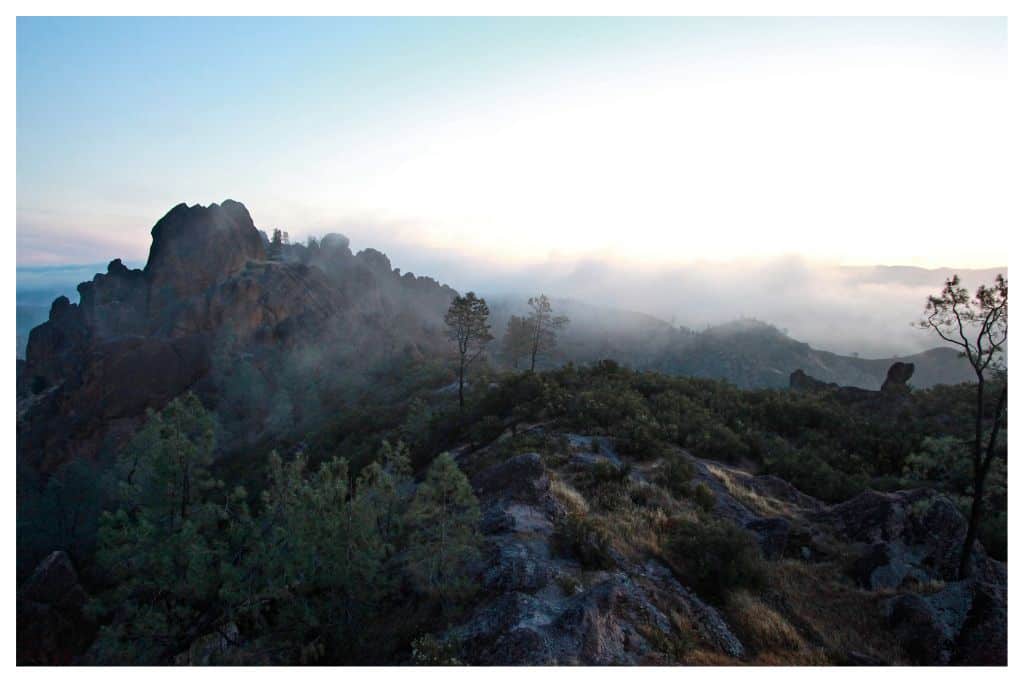
Hiking to the high peaks is definitely one of the highlights of Pinnacles National Park if you are up for a challenging hike. In addition to being the area where you are most likely to see Condors, the Hike Peaks Trail winds through the park’s namesake craggy peaks, and you are treated to fantastic views of the surrounding areas.
The peaks can be reached from a variety of starting points. Regardless of where you start, it is a challenging trail. Depending on your starting point distances range from 5 miles to 8.5 miles. Elevation gain ranges from 1,300 to 1,500 feet.
My favorite route to the hike peaks is to start at the Moses Spring Trail Head, hike past the reservoir, up the High Peaks, and then loop down past Condor Gulch Overlook.
3. Hike to Condor Gulch Overlook
If you aren’t up for the full climb to the High Peaks a good alternative is to do an out-and-back hike to the Condor Gulch Overlook.
Hiking to the Overlook you are treated to great views of the High Peaks. Keep your eyes peeled for Condors soaring high above.
While this trail is much shorter than the full climb to the High Peaks it is still a fairly challenging trail. The park rates it as moderate, but keep in mind it is a decent climb up to the overlook and there is very little shade.
4. See the Epic Wildflower Blooms
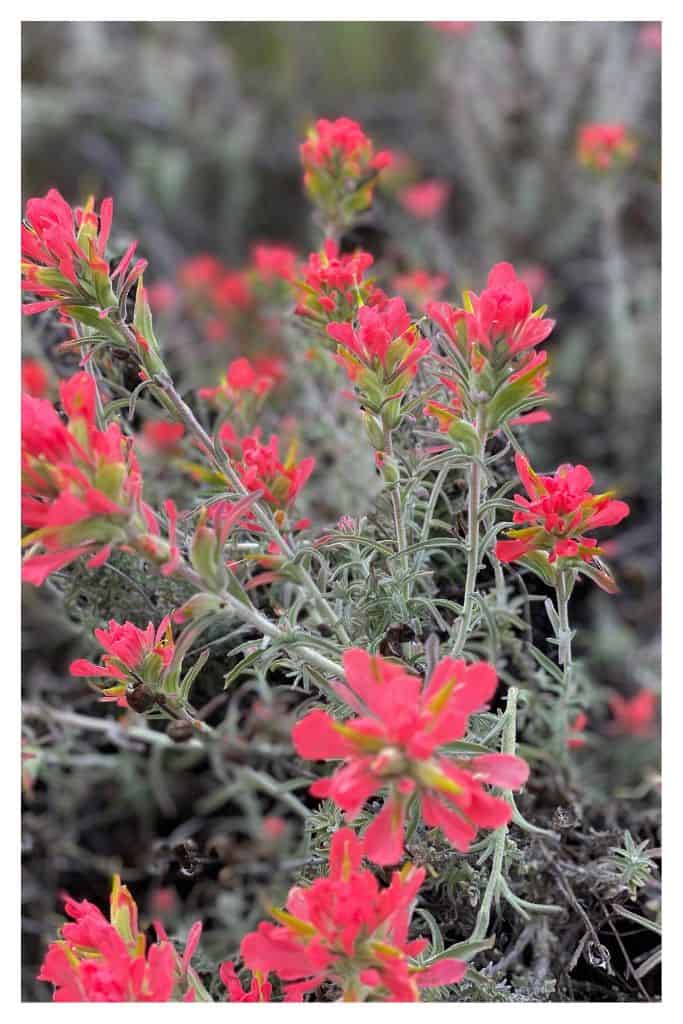
Each spring the wildflowers bloom at the Pinnacles painting the hillsides with a mix of yellows, oranges, reds, blues, purples, and pinks.
The best time of year to see the blooms is typically April. The wetter the winter the more prolonged, and dramatic, the wildflower blooms will be, in the wettest years flowers will continue to bloom through July.
5. Complete the Junior Ranger Program
If you have young kids in your group then completing the park’s Junior Ranger Progam is a great thing to do at Pinnacles National Park. You can download and print the Jr Ranger handbook from home. Here is the link for the Pinnacles Jr Ranger Booklet.
The handbook has activities designed for kids from 3 to 11+ years old. The activities will keep kids entertained and engaged with the park while teaching them about all the park has to offer.
Once the handbook has been completed kids can present it to a park ranger to be sworn in as an official Jr Ranger.
It is a very cute program that my kids absolutely love. The swearing-in ceremony is particularly adorable, giving the kids a sense of pride and accomplishment.
6. See the Majestic California Condors
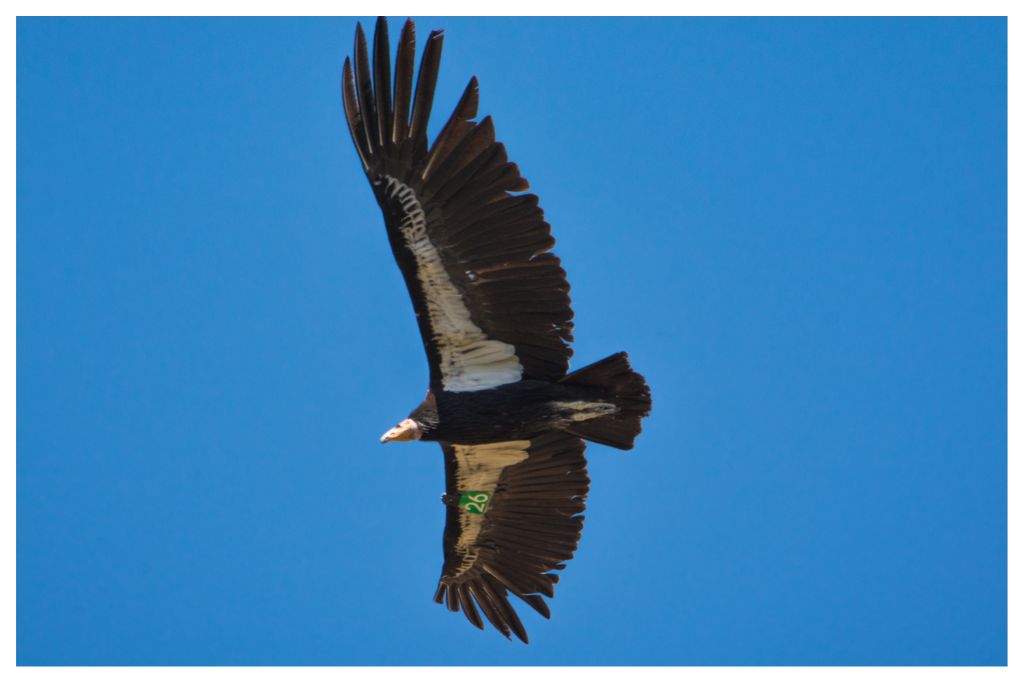
The California Condor is one of the largest birds on the planet and the largest land bird in North America. It has a maximum wingspan of almost 10ft and can weigh up to 26 lbs. Remarkably, California Condors are known to fly distances of 200 miles in a single day.
Sadly, the California Condor was at one point extinct in the wild, and on the verge of complete extinction with only 27 surviving individuals. The California Condor remains one of the world’s rarest birds, however, thanks to a conservation program put in place by the US government there are now over 500 living California Condors, over 300 of which live in the wild.
Pinnacles National Park is one of the places where California Condors were reintroduced to the wild and they continue to make a home here. The best place to see the condors is the High Peaks area of the park in the early morning or late evening.
The ridge southeast of the campground is also a good place to see the condors. They can be seen from the campground, and there are a couple of spotting scopes available to the public in the campground.
7. Go Camping at Pinnacles
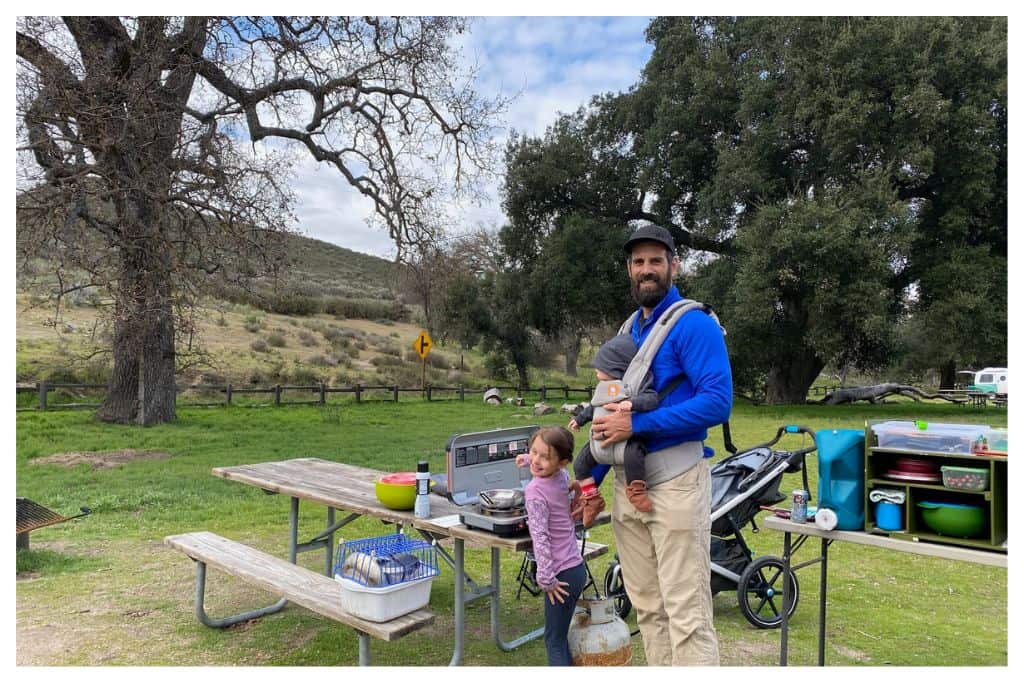
Our favorite thing to do in Pinnacles National Park is going camping!
The Pinnacles Campground is located on the east side of the park, set amongst oak trees along Chalone Creek. The Pinnacles Campground is the only available lodging within the park.
Pinnacles National Park gets a high number of visitors who only come for the day. So the nice thing about staying in the campground is it allows you to have access to the park in the mornings and evenings before most of the day visitors have arrived or after they have left.
For More info on the campground see the Where To Stay section below.
8. Take a Swim at the Swimming Pool
A pool is not something you often see in a National Park. However, you will find one at the Pinnacles. The pool is located on the east side of the park behind the camp store and is a vestige of when this area of the park used to be a privately owned ranch.
It is a relatively small pool, nothing fancy, but is a great way to cool off after a day of hiking. The pool is especially nice considering there aren’t any other opportunities for swimming within Pinnacles National Park.
9. See the Balconies Caves
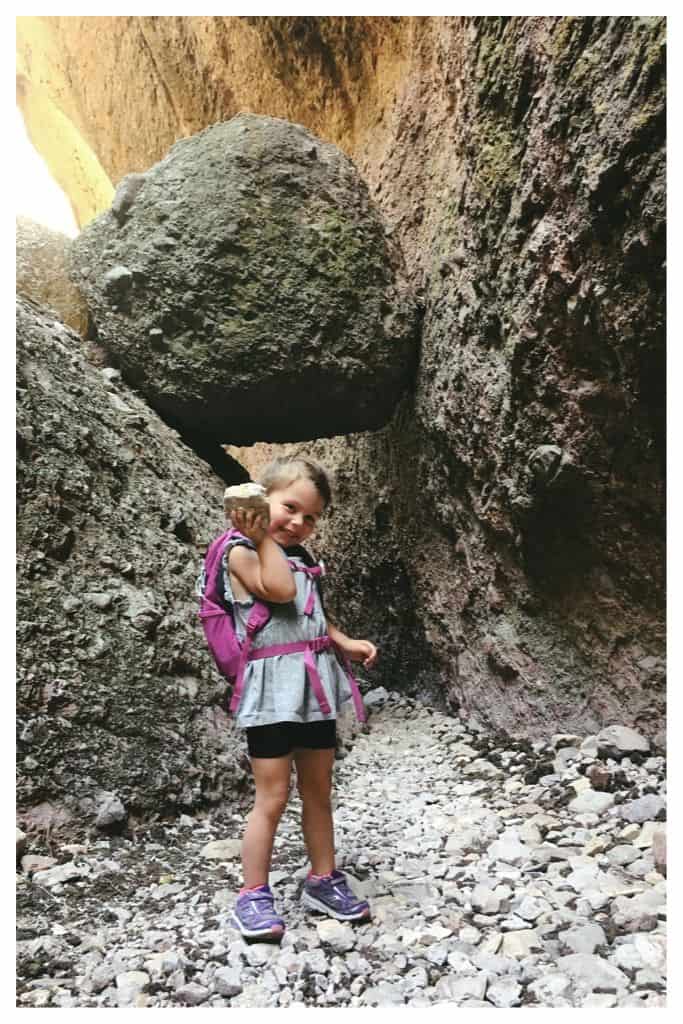
The Balconies Cave Trail can be accessed from either the west or east side of the park. The Balconies caves are what are known as talus caves. A Talus cave is formed when rocks fall into a crevasse covering it from above but leaving a space below.
The Balconies cave does require a flashlight to safely navigate during the daytime so be sure to throw one in your pack. The cave includes some narrow sections and places where you have to climb and clamber over rocks, which makes it a ton of fun for kids, but a bit challenging for those that lack mobility.
The trail can be done as a ‘lollipop’ (meaning you start and finish the hike on the same section with a loop section in the middle) from either side of the park. One of the reasons seeing the Balconies Cave is such a great thing to do in Pinnacles is the ease of access for all ages.
Compared to many of the other trails the Balconies Trail is relatively flat and offers shade for much of the hike.
10. Go Stargazing
The east side of Pinnacles National Park, where the campground is located, is relatively isolated from any cities and thus doesn’t suffer from nighttime light pollution. This makes stargazing a great thing to do in Pinnacles National Park.
The campground itself has some nice open places to gain an unobstructed view of the night sky. If you are wanting to even get away from the light of campfires and campground light sources, take a short walk down the Bench Trail, which leads out of the campground, and find an open spot to enjoy the view!
11. Hike To Chalone Peak
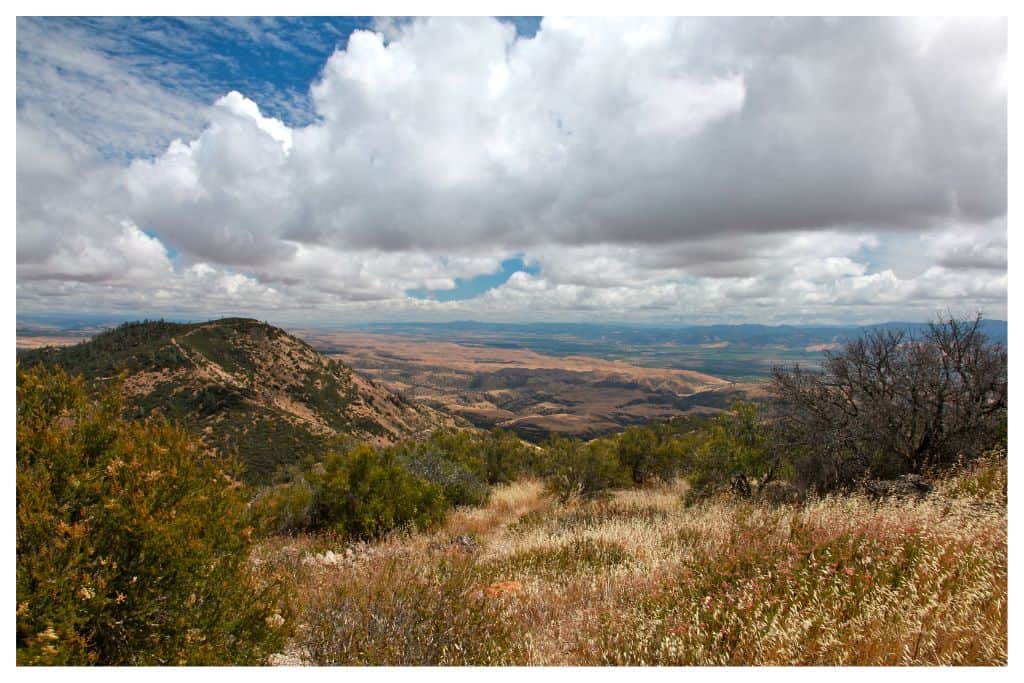
North Chalone Peak is the highest point in the park. Standing on the peak you will be east of the Salinas Valley, and you will be granted sweeping views of both the Salinas and Priest Valleys. To the west, beyond highway 101 and the farm fields of the Salinas Valley, you will have views of the Santa Lucia Mountains.
This is a longer trail and is exposed to the sun for the majority of the trail, so be sure to bring lots of water with you, there is nowhere to fill up along the way.
The Chalone Peak trail leads away from the more popular areas of the park and thus you can expect fewer crowds along the way.
12. Hike From The Campground to the Bear Gulch Visitor Center
On the park’s west side, the main trail system is accessed via the Bear Gulch Visitor center area. Most visitors arrive here by either driving their own car (parking is very limited) or parking near the campground and taking the park-operated shuttle.
However, there is a trail that connects the campground to the visitor center. From the campground you follow the Bench Trail along Chalone Creek, it starts out flat and then turns and follows the Sycamore Trail until you reach the Bear Gulch Day Use Area.
This section of trail is one of the more green areas of the park and will typically have running water even late into the summer.
If you are looking for a challenging hike, you can tie this into a hike up to Bear Gulch Reservoir or The High Peak area.
Alternatively, you could take the shuttle up to the visitor center, complete your desired hike for the day, and then take this trail back to the campground rather than riding the shuttle back down.
13. Visit The Bacon Ranch Homestead
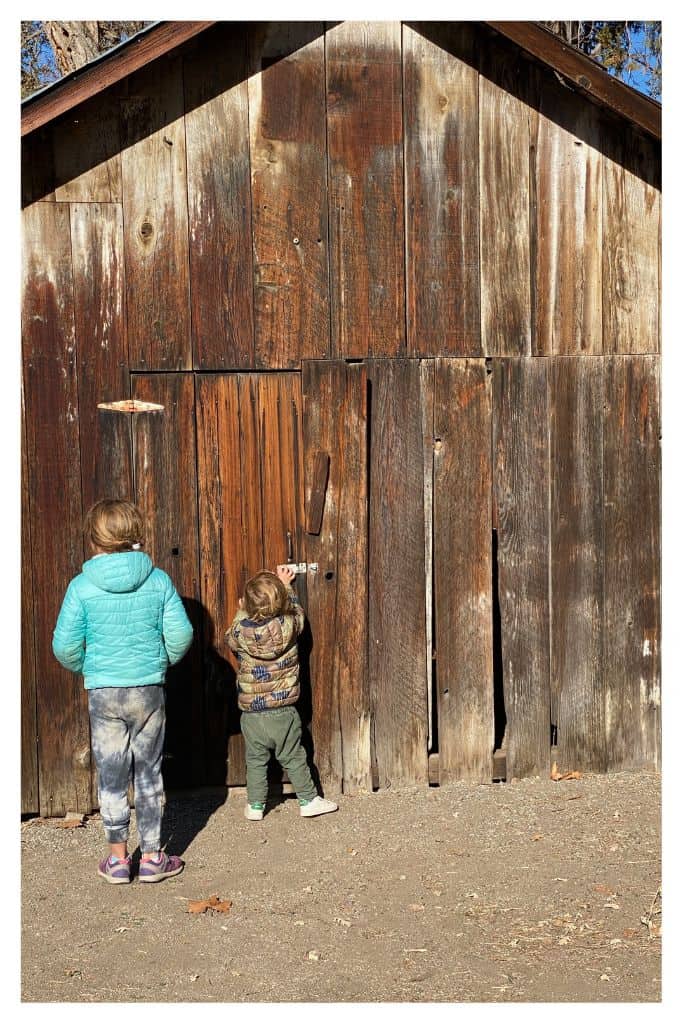
The Bacon Ranch homestead lies about a quarter mile down an unpaved road from the Pinnacles West Visitor Center. The homestead was originally established in 1870 and had grown to a total of 2600 acres at the time it was acquired by the National Park in 2006.
Much of the original homestead is still standing including the home, barn, and a number of outbuildings. The short walk to the Bacon Ranch Homestead is a pretty walk through the oaks.
Arriving at the homestead gives you a feeling of traveling back in time. Much of the surrounding area looks the same as it did over 150 years ago. Our kids have a ton of fun wandering around the historic buildings and imagining what it would have been like to live in a time when the ranch was fully active.
14. Take a Walk Along the Butterfield Ranch Road
If you continue down the dirt road passed the Bacon Ranch Homestead you can actually hike all the way out to Highway 25. The road passes through a large open field that was once cattle pastures and farmland.
There are beautiful views of the surrounding hillsides and large oaks speckled throughout the field. There isn’t much shade so it would be hot on a summer day, but lovely as a morning or evening stroll on a cooler day.
This area is in the opposite direction of the park’s main attractions and is thus usually very quiet.
15. North Wilderness Loop
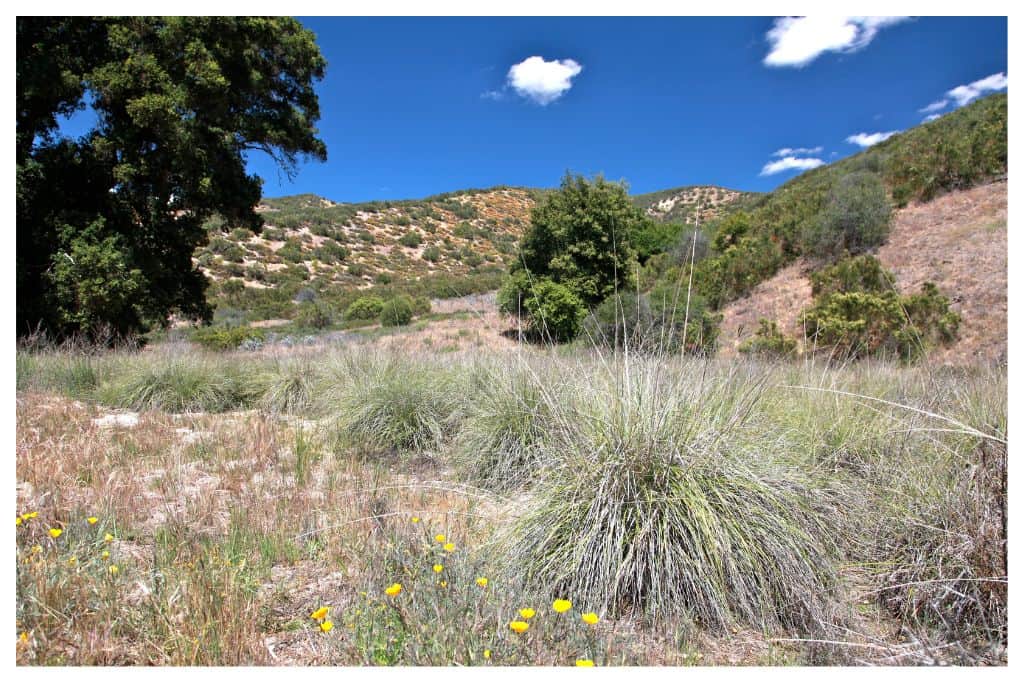
For those looking for a longer hike and a bit of solitude, the North Wilderness Loop will provide both. The North Wilderness Trail is an unmaintained trail that connects the West Chapparal Picnic Area to the Old Pinnacles Trail Head.
Starting from the west side, the trail climbs out of the West Chapparal picnic area and winds along chaparral-covered ridges before dropping down into the Chalone Creek Bed. Depending on the time of year, Chalone Creek is one of the few places in the park where you can find running water.
This is an unmaintained trail, so sections may be overgrown, and you’ll need to keep your eye out for Rock Cairns marking the path of the trail.
16. Take an Evening Walk Along The Bench Trail
The Bench Trail is a flat and easy trail that leads directly out of the campground and parallels the main road leading up the valley.
The Bench Trail is enjoyable at any time of day but is particularly nice as an evening stroll while the sun is setting. At various points along the trail, there are views up to the high peaks and at other times you walk along the edge of a broad dry river bed.
The Bench Trail does connect to the rest of the park’s trail system, so if you are looking for a longer hike, any of the park’s trails can be accessed from the campground via the Bench Trail.
17. Hike The South Wilderness Trail
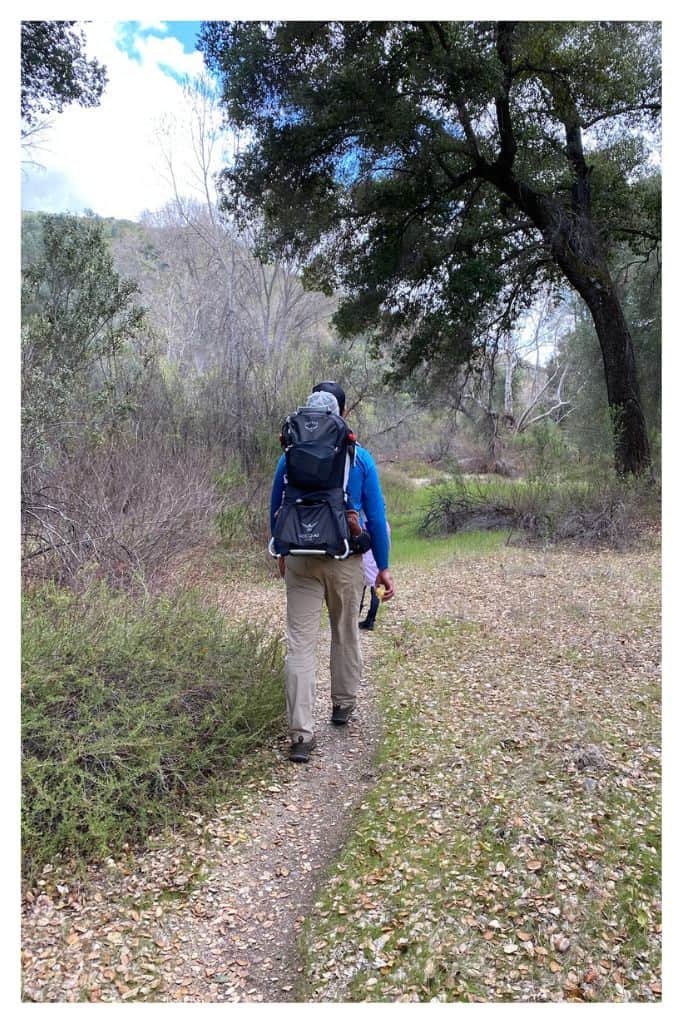
The South Wilderness Trail is an unmaintained trail that is accessible from the campground via the Bench Trail.
This is a great trail for kids as it is mostly flat and has a good amount of shade. This is an out-and-back trail. If you hike the entire way to the park boundary it will be 6.5 miles round trip.
Sections of the trail follow a creek that has running water for much of the year. The water makes this area of the park greener and makes it a great area for wildlife and bird viewing.
How many days do you need at Pinnacles National Park?
Pinnacles is a small park, so you can see a lot of the park in a relatively short amount of time. To really get a good feel for the park I would recommend three days.
Below are two sample three-day itineraries, one for those that are eager for longer hikes, and one for those with young kids or who are just looking for shorter hikes.
If you are looking to expand your trip there are lots of other great camping opportunities within a short drive of Pinnacles National Park. Check out our article 31 Best Bay Area Car Camping Destinations for some ideas.
Sample Itinerary 1: Longer Hikes
Day 1: Condor Gulch Trail to High Peaks to Moses Springs Trailhead
- This will combine numbers 1, 2, & 3 from the list above into one hike. For those wanting an extra challenge you can start and/or finish your hike from the campground as described in number 14.
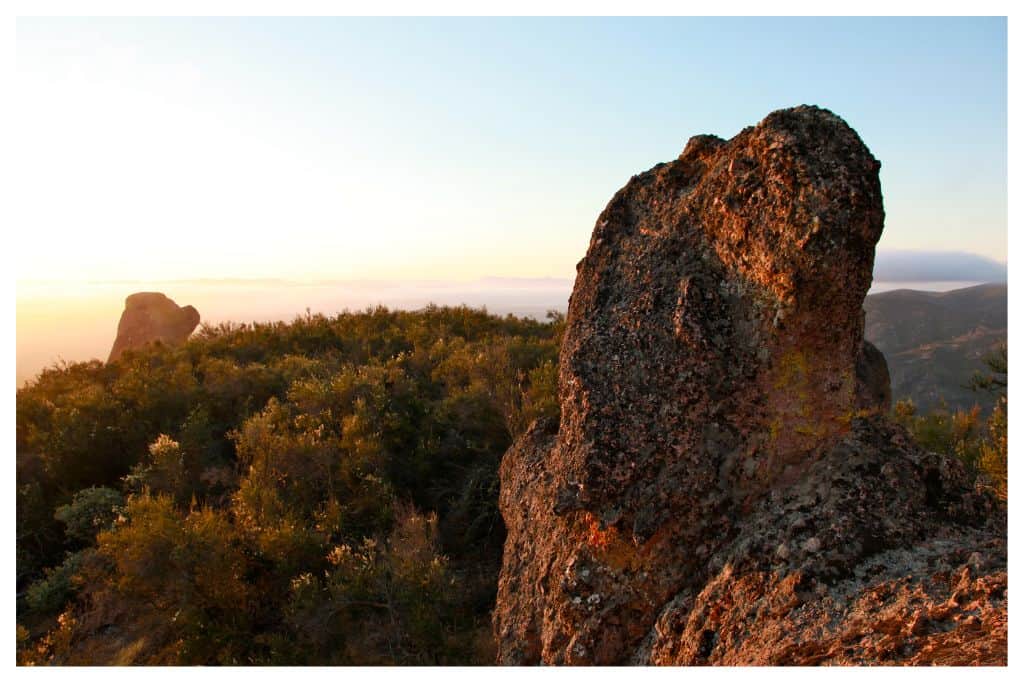
Day 2: Old Pinnacles Trail Head to Balconies Caves + Evening Walk along the Bench Trail.
- Numbers 8 and 15 from the list above.
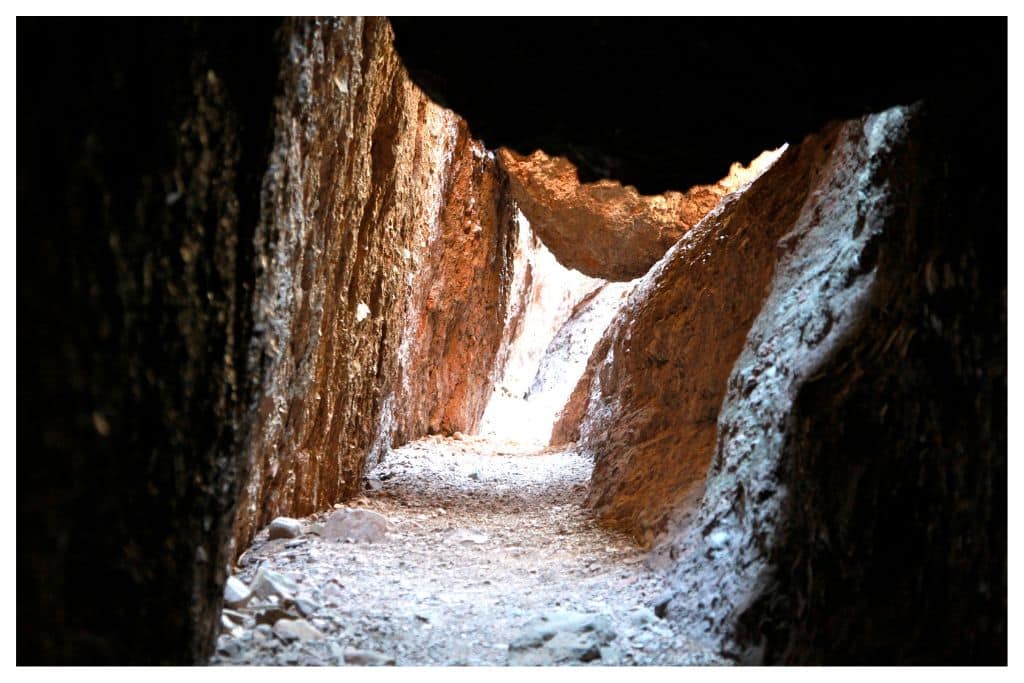
Day 3: Moses Spring to Chalone Peak + Evening Walk to Bacon Homestead and out Butterfield Ranch Road
- Numbers 11, 12, & 13 from the list above.
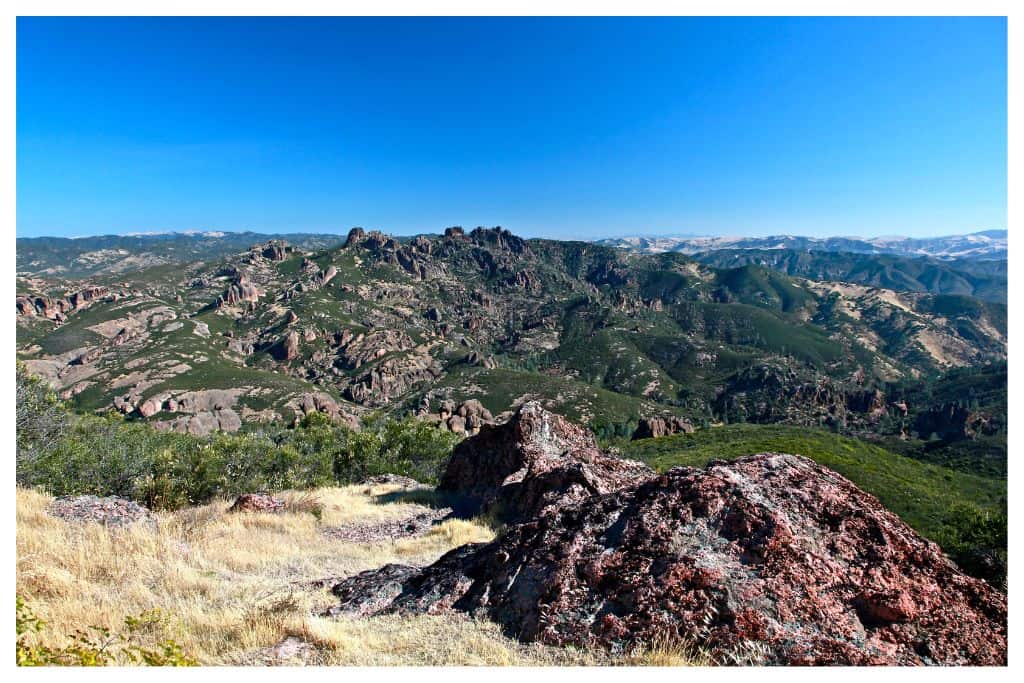
Sample Itinerary 2: Easier Hikes
Day 1: Moses Spring to Bear Gulch Reservoir + Evening Walk to Bacon Homestead and out Butterfield Ranch Road
- Numbers 1, 12, and 13 from the list above.
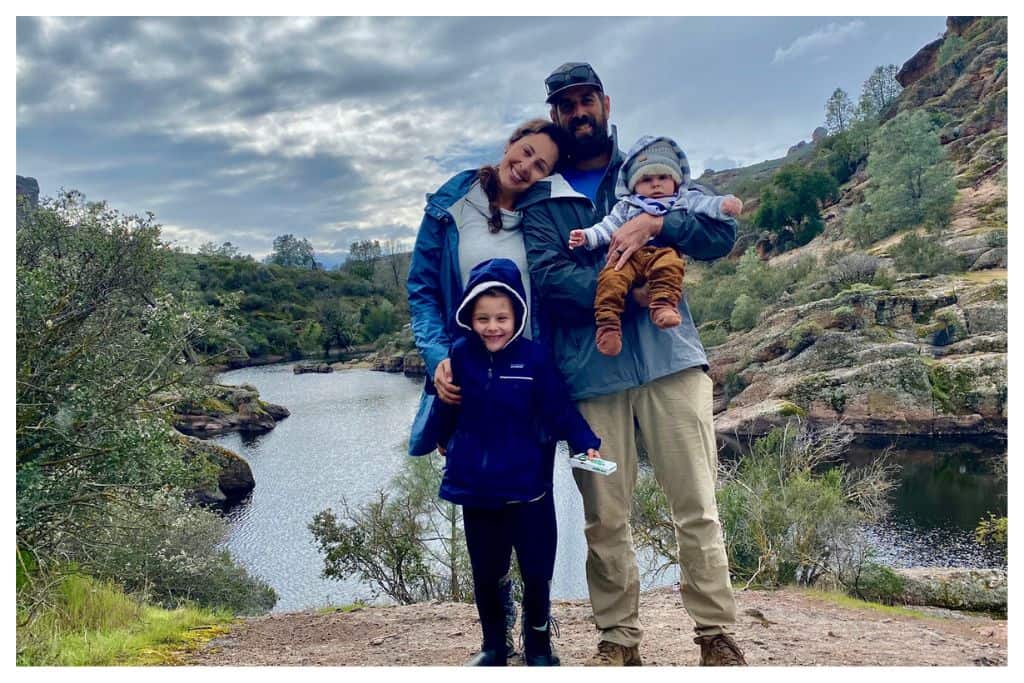
Day 2: Old Pinnacles Trail Head to Balconies Cave
- Number 8 from the list above
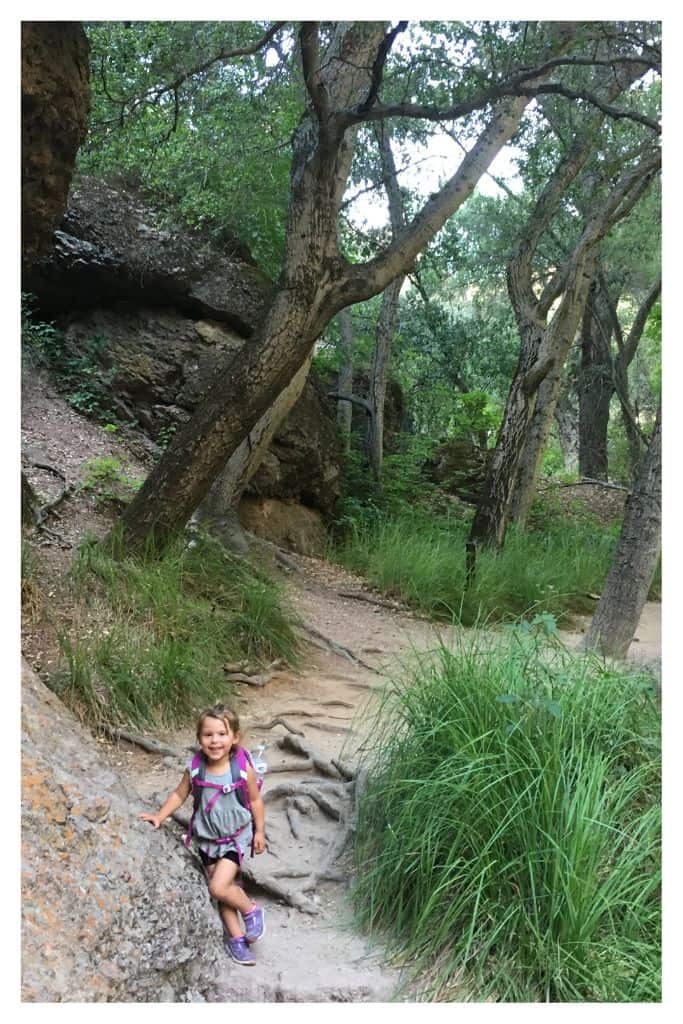
Day 3: Bench Trail to Southwilderness Trail
- Number 17 from the list above
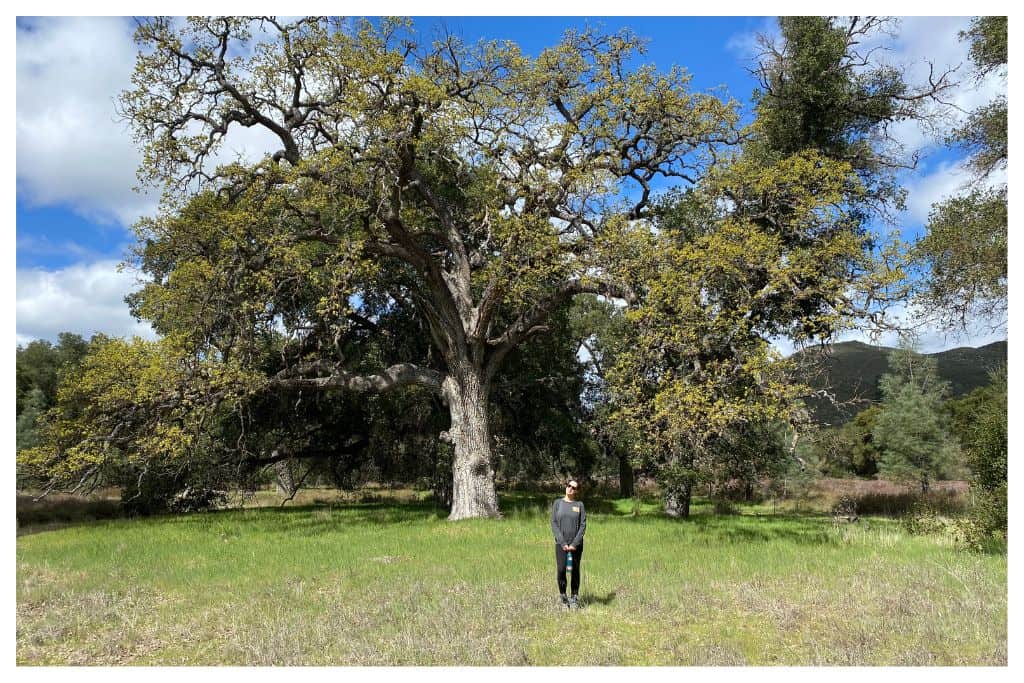
What to Do for One Day in Pinnacles National Park?
If you only have one day in Pinnacles National Park then the hike I would recommend is to start by hiking the Condor Gulch Trail up to the High Peaks and then loop down the rim trail, past Bear Gulch Reservoir, and finishing your hike at Moses Spring.
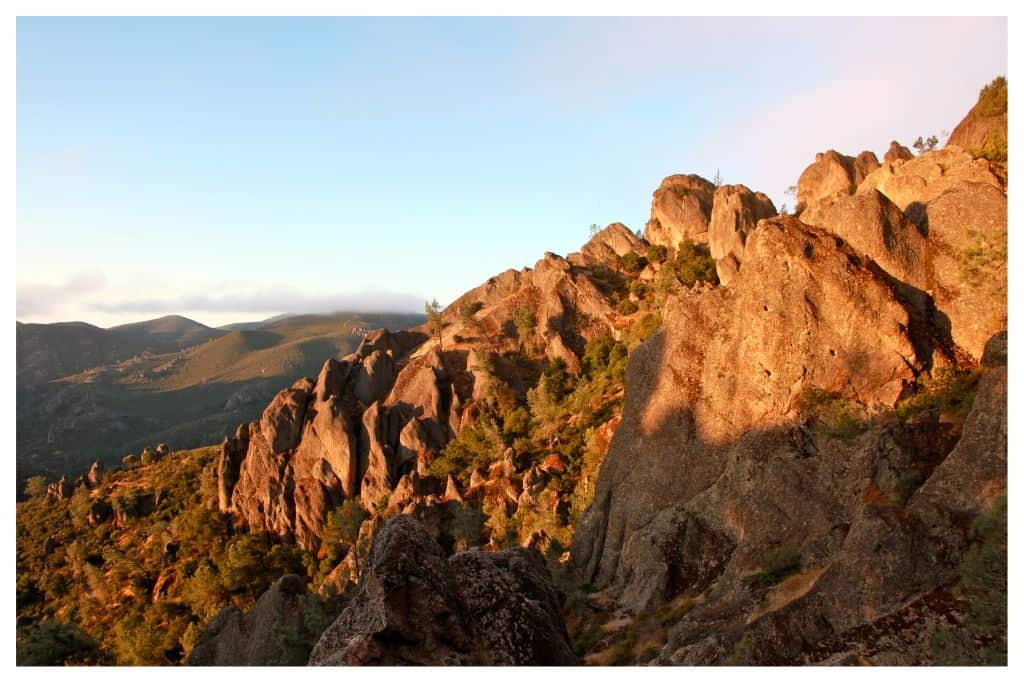
This will combine numbers 1,2, and 3 from the list above. This route will take you along the famed Hike Peaks Loop as you hike through the Pinnacles volcanic formation and unique rock spires. You will get to see the majority of the high points the park has to offer including hiking through the area where you will be most likely to spot condors.
For those particularly ambitious hikers looking to really get the most out of your day, you can start and/or finish your hike from the campground as described in number 14.
Things to Know Before You Visit Pinnacles
Best Time To Visit Pinnacles National Park
Pinnacles National Park is open year-round, but the best time to visit is undoubtedly the spring. Temperatures are the most pleasant at this time. You are most likely to see wildflowers, and the park will generally be greener overall.
The fall is a great second choice, temperatures will be nice but you won’t have the wildflower blooms.
Winter, although it can be cold, is also a great time to visit the Pinnacles. The park is much less crowded during the winter and overall has a very peaceful feel. You can enjoy many trails all to yourself on a winter day.

East vs West Pinnacles
There are two entrances to Pinnacles National Park, one from the east and one from the west. It is important to note that the two are not interconnected by roads within the park. The only way to get from one side of the park to the other is by hiking, or a long (multi-hour) drive, back out of the park.
So you will need to choose which side to visit ahead of time. Both sides have their pros, but if you are coming for your first time I would highly recommend the east side of the park. The east side of the park has better access to the park’s main trail system and overall more options for things to do.
If you are coming for the day, or are not staying in the park, you will want to park in the visitor lot near the campground and take the shuttle up to the Bear Gulch Day Use Area. There is parking near the Bear Gulch Visitor Center and the Moses Spring parking area but both fill up early during peak season.
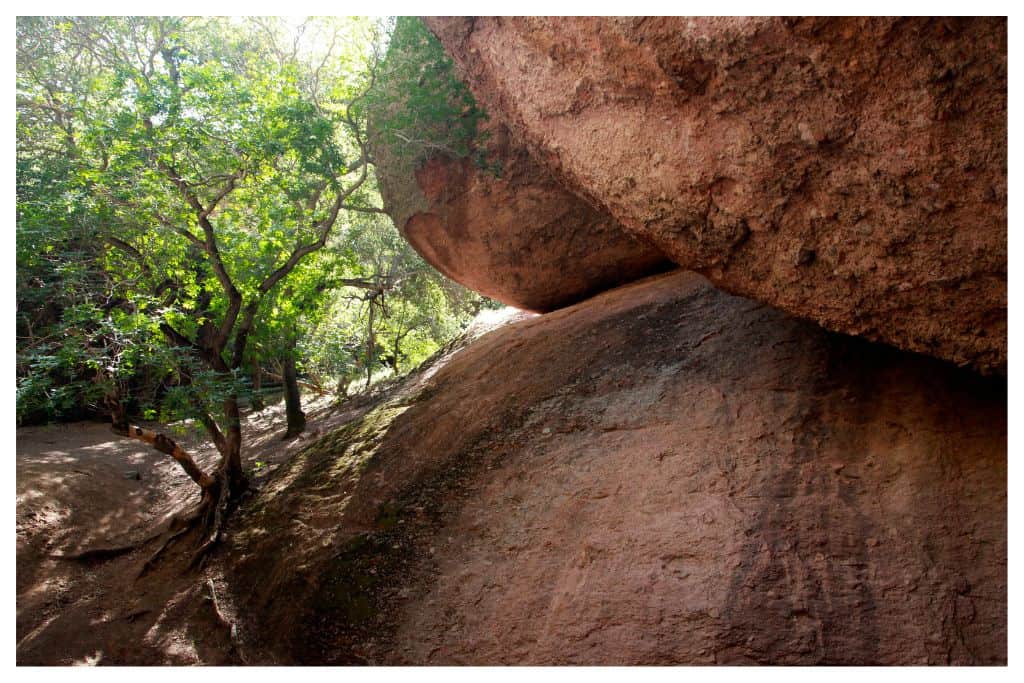
That being said, the west side of the park is still worth a visit. You can access the High Peaks and the park’s main trail system via a steep climb up the Juniper Canyon Trail. However, my favorite hike from the west side of the park is the west chaparral picnic area to the Balconies cave. It is a reasonably easy hike, with a great mixture of views and interesting rock formations.
Where to Stay: Pinnacles National Park
There is only one option to stay in Pinnacles National Park, the campground. The campground is located on the east side of the park. There are tent and RV sites, as well as tent cabins.
There is one dedicated RV loop that includes electrical hookups. The campground also has a central dump station available. The RV loop is the most exposed area of the campground with the least privacy between sites.
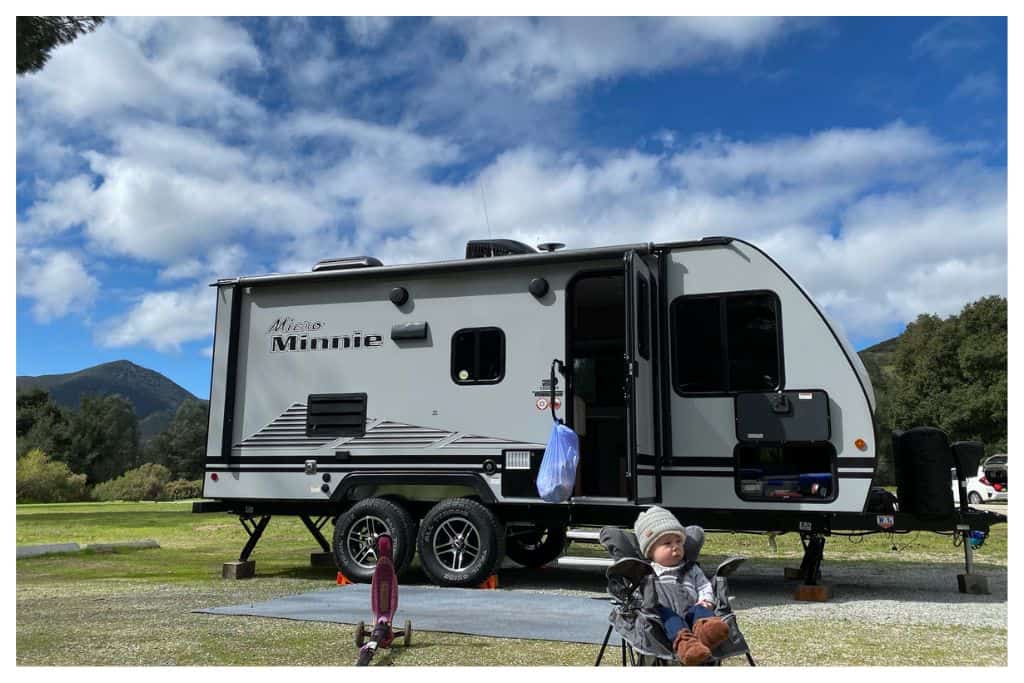
The rest of the campground is open to tents or RVs but does not have any hookups. All sites have picnic tables and fire rings. However, in recent years fires have been prohibited for much of the year due to drought conditions. Bathrooms include running water and flush toilets. Coin-operated showers are available in the bathroom near the camp store.
The campground recently added a few tent cabins as well. The cabins come with beds but no bedding so you will need to bring your own. You will need to plan to bring all your own food and cooking equipment as there is nowhere to purchase a meal within the park.
There is a camp store that offers some essential food items and treats, but you won’t want to rely on them for all your food. The store also has a mix of souvenirs and camping essentials.
If you are considering your first camping trip check out our article, What is the Appeal of Camping?
If you aren’t a camper the closest place to stay to the east side of the park is about a 30 min drive away in the town of Hollister. The west entrance has available accommodation in the town of Soledad. The drive from Soledad to the west entrance is shorter than the drive from Hollister to the east entrance, however, if this is your first time visiting, or if you are a family with kids, I definitely recommend the east side of the park.
What Should I Pack For Pinnacles?
Pinnacles typically has broad temperature swings throughout the day being chilly to cold in the morning and evening and warm to downright hot during mid-day. So you will want to pack layers and be prepared for both.
The most important thing to keep in mind is that not only can Pinnacles be hot, but many of the trails also have little to no shade so be prepared for the sun! Bring a hat that offers plenty of shade, sunscreen, and most importantly water! Once you are out hiking on the main trails there is nowhere to fill up water, so be sure to always start your day with enough water to last you the full day.
Here is our essentials packing list;
Gear
✅ Hat
✅ Sunscreen
✅ Water Bottles
✅ Sunglasses
✅ Flashlight for the caves
✅Backpack
✅Hiking Poles to help with the ascent and descent
(If you haven’t used them before these are game-changers!)
Clothes
✅ Warm pants for morning and evening
✅ Long underwear or leggings for morning and evening
✅ Warm jacket for morning and evening
✅ Beenie for morning and evening
✅ Gloves for morning and evening
✅ Shorts or lightweight pants for hiking
✅ Short-sleeve or lightweight long-sleeve shirt for hiking
✅ Lightweight sweatshirt or jacket for starting hikes in the morning
✅ Hiking Boots or shoes (Waterproof not necessary)
Things To Do In Pinnacles National Park: Final Thoughts
I hope that this list of 17 Awesome Things To Do In Pinnacles National Park has inspired you to visit Pinnacles. Pinnacles is a small park but is packed full of great hiking, beautiful views, and lots of fun!
We live only about an hour away from Pinnacles and we visit often, every time we find something new that makes us love the park even more! We hope you have the same experience when you visit Pinnacles National Park!
